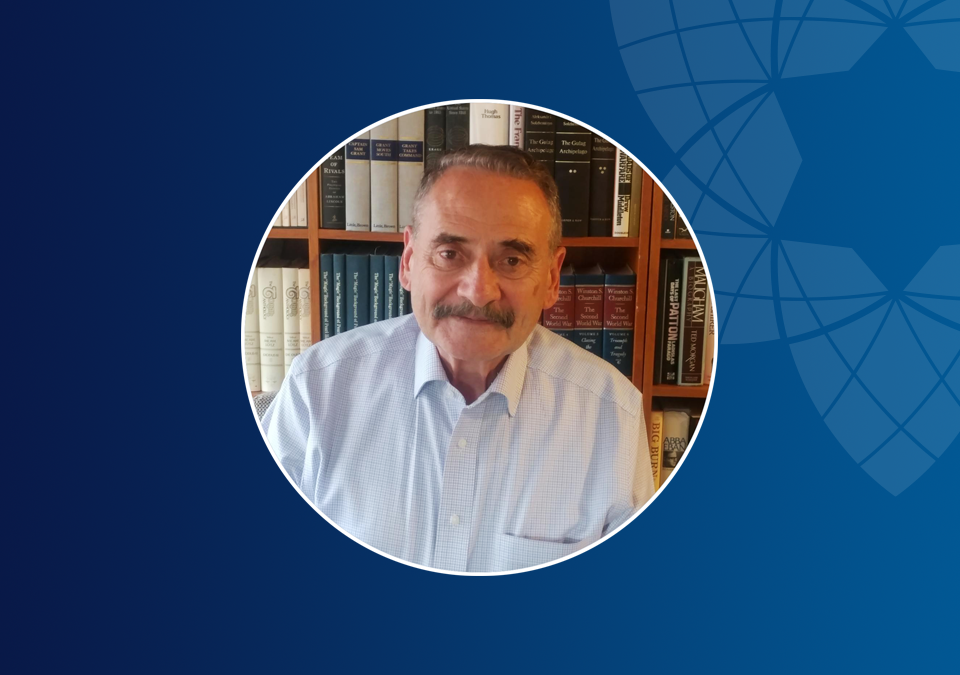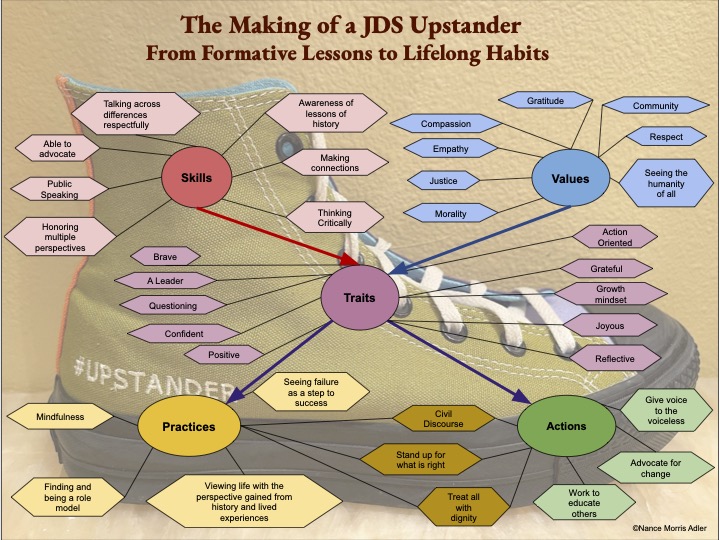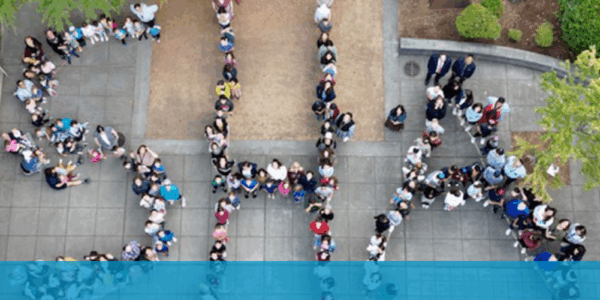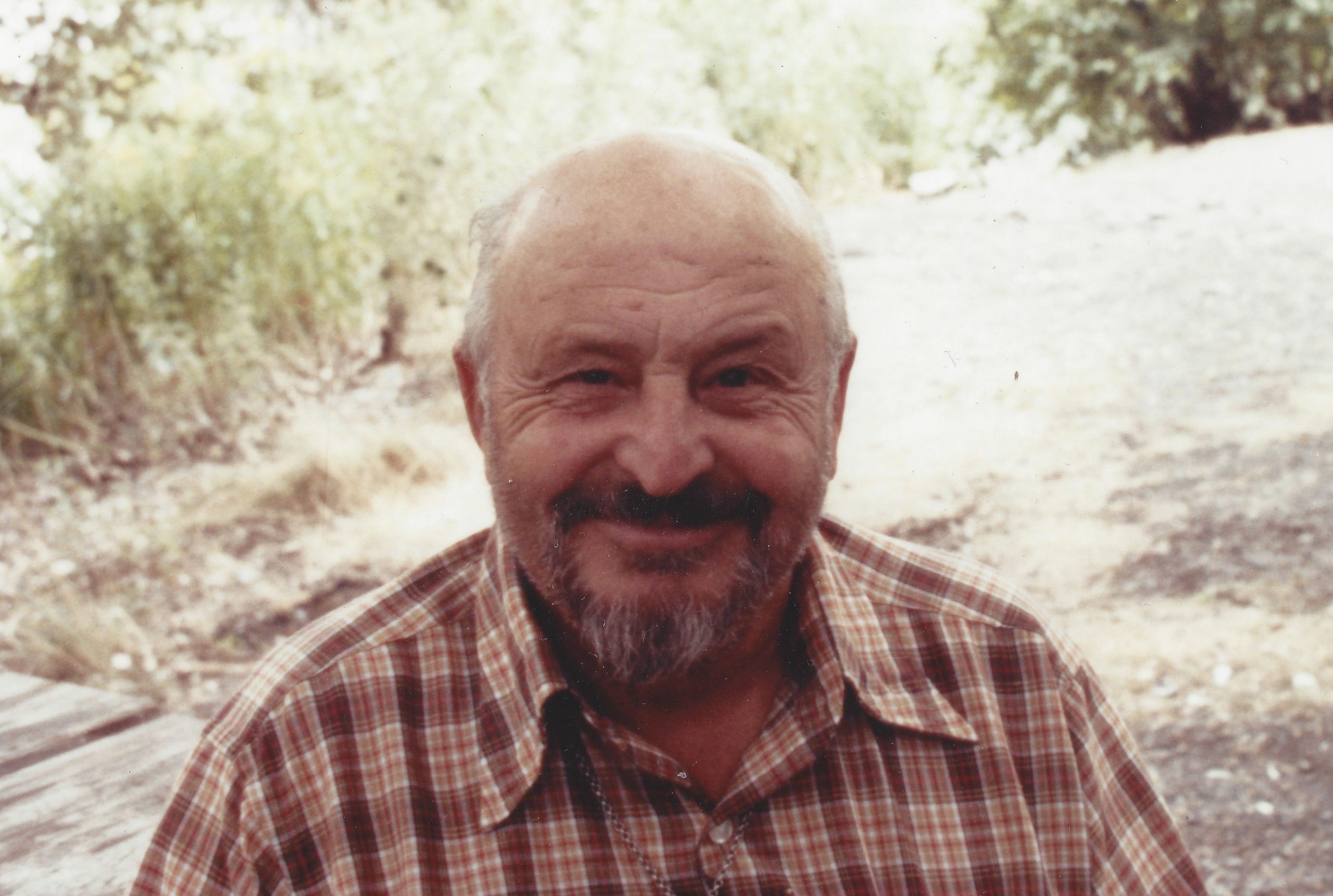
From Shoemaker to Philanthropist: Sam Israel’s Life and Legacy
September 2, 2021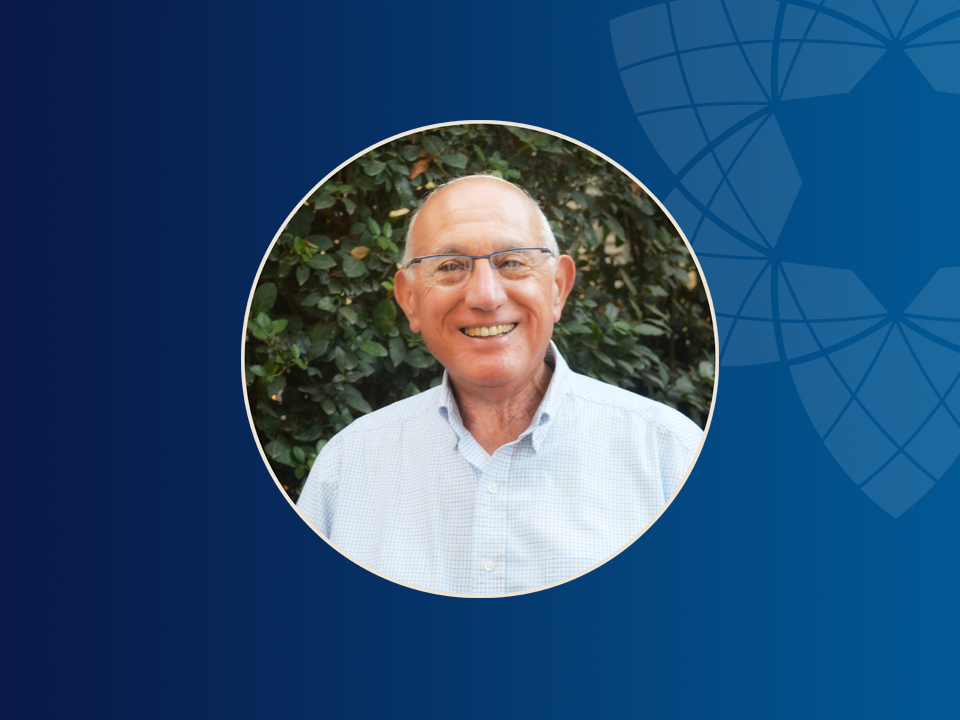
Samis Trustee Spotlight: Barry Ernstoff
October 8, 2021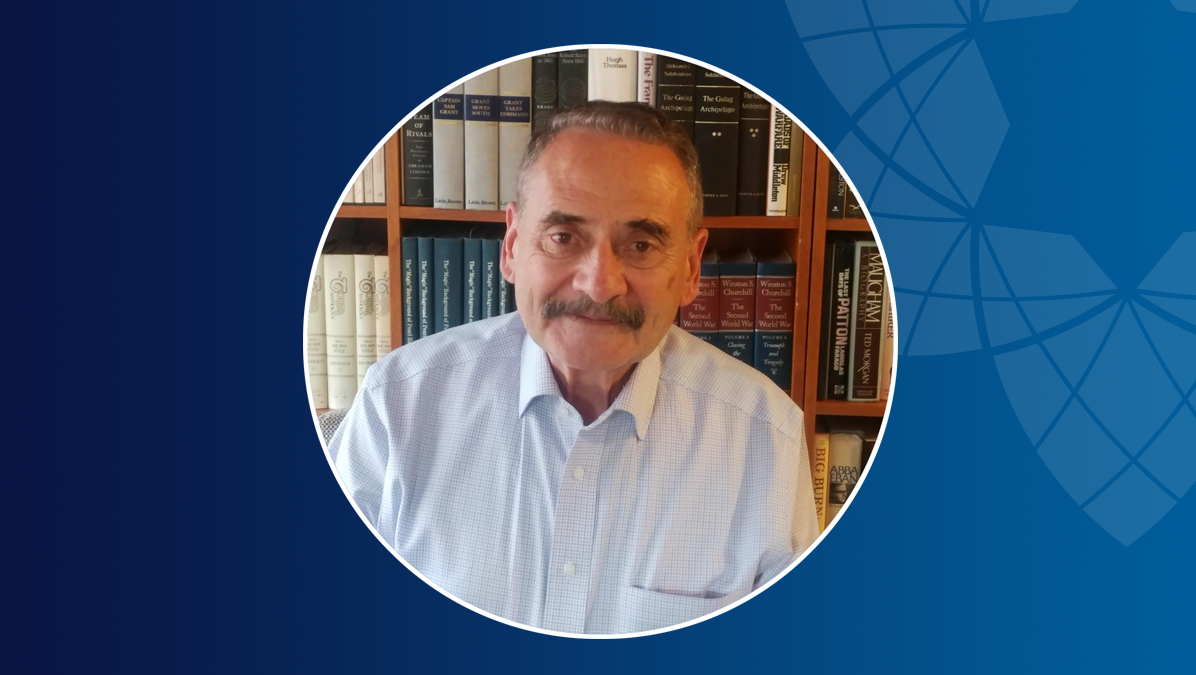
A conversation with avid outdoorsman, former Board Chair, and lifetime Samis board member, Jerome Cohen
Years of Service: Lifetime Trustee
Committee (s): Grants Committee, Experiential Education Sub-Committee Chair, Endowment Investment Committee, Trusteeship Committee, Executive Committee
Past Service: Board Chair
Did you have a personal connection to Sam Israel before joining the board?
I’ve had a file in my desk drawer since 1987 and it contains my correspondence with Sam, including handwritten notes, which was predominantly how I communicated with him. I recently pulled all of that out and looked at it. Inside is a letter he wrote to me about joining the board, and a lot of other good stuff!
At the time I first connected with Sam, in the 1980s, I oversaw our family’s construction company. I had a law degree, and I was house counsel, but then I became head of the construction company. One day I got a call from one of Sam’s lawyers, Helen Johansen. She knew that I was in the construction business and Sam was looking for a full-time maintenance person that could help fix up his buildings. Anyway, Helen was sort of defensive and she said, “You know he’s had this reputation, but he’s really a very nice man, and you should call him.” I said “Don’t worry, don’t worry, I know who he is. He came from the Island of Rhodes, where my grandparents came from, not to worry.” I gave him a call and he explained to me what he was looking for and so on. But at the time he had a specific problem. He owned this little bungalow, a brick cottage he built on the western shore of Mercer Island on the waterfront and he said, “My neighbors have called me and said somebody broke into the property, they’re squatting there, and would you go check it out because it’s really not a good thing.”
The property was all boarded up, including the windows and doors which were covered with plywood. Sam had lived there until he left for Soap Lake. I’m guessing it had just been sitting there unoccupied for decades Sam said, “I need somebody to go down there and put the boards back up and secure it” and I said, “OK, great let me go over there and take a look” and Sam said, “Whatever it costs just send me the bill, not a problem. Whatever the cost, it doesn’t matter.” So, I drove over to Mercer Island along the northern shore road and all I saw was nothing but brambles and blackberry bushes and overgrown woods. Finally, I spotted this little chain across an area that looked like there had been a driveway at one time. I parked the car, got out and followed this deer path underneath all the blackberry bushes down to the water. On the way down, I saw this large garage type building. I looked inside, peeked through the plywood cracks and saw there were trucks that looked like army surplus from World War II. Big Dodge four-by fours
I kept heading down and finally found the house. Sure enough, the plywood had been ripped off the doors and it looked like somebody had been there not too long ago. Looking inside was like going back in a time machine to the 1940’s or so. Everything was still there, the couch (kanape), the kitchen cupboards and tile, there was even an old orange juice squeezer, (avocado green with a big chrome handle) on the countertop. In the living room there was this big wooden cabinet with a little tiny screen in it. It was a TV set. The screen had been smashed. I mean just walking in, it was like you were somewhere in another time. I took some pictures of the bungalow and went back to talk to my people about the situation. We determined that the only way we’re going to get plywood down there was on the water. So, we rented a barge and that’s how we brought the plywood and materials in. We boarded and secured the house, took some pictures, sent them to Sam. That experience was the start of our relationship.
After the work on the house was complete, I talked to Sam on the phone several times and we also wrote letters back and forth. He told me about his ideas about a foundation supporting Jewish education and projects in Israel. In one of his letters, he said that there are supposed to be 10 trustees for the Foundation. He’s got 13 people on the list but he’d be so very happy if I was to be one of the trustees. He wrote that when the time comes, after he passes away, only 10 will be required to administer the Foundation. But if for any reason there were those who were unable to serve, there would be four extra choices and he would like to put my name on the list. He asked me to please let him know if I was interested. He went on to write “The reason that we (the Jewish people) have survived 2,000 years is because among us, there were Hebrews like you and I, and that we believe that WE (in capital letters) are our brother’s keeper. Otherwise, we would have disappeared from the face of the earth. G-d bless you, very truly, Sam Israel.” He also attached a little outline of the objectives he desired for the Foundation. I wrote him back and said I’d be honored and thrilled to have my name on the list as a trustee. So that was really my communication with Sam and how I got involved with him.
Unfortunately, I was not able to meet Sam face to face at that time. I wish I had gone to Soap Lake to see him. I didn’t see him in person until after he had a stroke, and he was in the convalescent home here in Seattle. He was not in good condition at the time, so it was not a very meaningful conversation. I wish I had taken the time to visit him earlier. Later, after he passed, I discovered that he and I had quite a bit in common. He enjoyed the outdoors, hiking and camping, as do I. And I found out that he was one of the few people of his era that had climbed Mount Rainier and Pinnacle Peak. I’ve done both of those summits as well, so we had a lot in common that way. But that’s after the fact, I didn’t find that out until much later.
Please describe your most memorable interaction with Sam.
I think all the communication I had with Sam was memorable. He was very detailed oriented, a very knowledgeable guy. I got to appreciate his sense of values, especially towards the Jewish people and Israel, and to what his vision was in supporting Israel and archaeology, nature, and wildlife in Israel. Those were the kinds of things that I took away from those interactions with him and that resonated with me.
What’s the greatest story you ever heard about Sam?
Well, there’s obviously more than one. But the first story is when I told my dad, Orville, that I was communicating with Sam and we were going to do this job for him on Mercer Island. He told me a story about when he first met Sam Israel. It was before World War II and my dad was probably 13 or 14 years old. He was with his good buddy Ralph Policar. The two of them were in the Boy Scouts together, and they decided they were going to embark on a big hiking and camping trip to the wilds of Mercer Island, which was a big deal at the time. They had to take the ferry boat to get there and Mercer Island was a wooded wilderness area; a natural place to go, but not too far away from home.
In preparation for their trip, they got their backpacks and loaded them with cans of food (that’s when the cans were made of steel), and bottles of milk (that’s when the bottles were made of glass). All of this stuff ended up weighing a hundred pounds! They got on the boat and hiked to a place to camp. They laid all their food out on a picnic table. Over the hill comes this young athletic looking guy, with a small backpack. He sees these two kids and asks what are you doing? My dad and Ralph say well we’re camping and we’re hiking. Sam sees all this food with the bottles and the cans and everything and he started laughing. That guy was Sam Israel. Sam just had a little tiny can of condensed milk, some dried meat, a candy bar, and some water, and that was it. My dad said he just laughed and laughed at us because we had brought all this stuff.
The second story has to do with the little waterfront house on Mercer Island I spoke of before. When I first became a Trustee of the Foundation, Eddie Hasson and his wife Margarite invite my wife and I to dinner at his house. He brought out an old movie projector and showed us films Sam had taken when he was young. (Sam was a consummate photographer). Eddie told me that when Sam was young, he fell in love with a young lady. The films showed this little beach house, the bungalow that I had worked on. It was a bright, sunny summer day on the beach in front of the house. There was Sam in a bathing suit. He was a buff, slender really good-looking guy, with a chiseled face. There was another man that was where there with him who was equally good looking. He was Al Franco. Al became, an attorney, who was actually one of my mentors. There were also two ladies there in bathing suits as well. One of them was this lady that Sam had eyes for and she was a really beautiful, olive skin and dark hair. I saw these films and Eddie points to the girl and says Sam wanted to marry her, but her father refused because Sam was not a professional and he wanted his daughter to marry a professional. He said Sam was heartbroken. Eddie intimated that Sam never got married because he couldn’t be married to her.
Fast forward, many, many, years. I am doing a business estate transaction as a lawyer. One of my clients was I think the nephew of the lady that Sam fell in love with. I knew the name of the family, so I said, “Tom, did you know that your aunt fell in love with Sam Israel, but her father, your grandfather, refused to allow the marriage because Sam wasn’t a professional.” He had no clue that this was part of his family history but said, “My grandpa refused to allow her to marry Sam Israel? I don’t believe it! If he were alive today, I would kill him!”
What is the most meaningful story, event, or experience you can recall related to your service on the Samis Board?
There are many meaningful experiences relating to my service on the Samis board. Going to Israel and having the opportunity to affect Israeli society are experiences that are on top of the list. Our work with the Rashi Foundation in creating shelters for battered women and their children is especially meaningful.
To have had a relationship with the archaeologist Dr. Ehud Netzer was thrilling. I remember, in particular, his giving us a personal tour of his digs at Herodium before it was announced to the world that he had discovered the tomb of King Herod. I cherish that relationship and the work that Samis has done in Israeli archaeology and wildlife preservation. It’s been very meaningful and fulfilling.
The other thing I am proud of and which I believe has turned the corner for Samis is conducting, completing the search and hiring our CEO, Connie Kanter. Our search committee worked diligently to identify the job description and type of person we were looking for before we even sought out candidates. It took us a year to find the right person. I felt that the work done by the committee changed the direction of the Foundation and put us on a much more professional path in the world of philanthropy. Bringing Connie Kanter on board as CEO gave me a huge sense of satisfaction and I feel it was a very meaningful contribution to the Foundation.
Being a Samis Trustee has been an incredible journey and experience, and I don’t think I would ever trade the last 27 years of working with the board and the Foundation for anything. It’s been one of the seminal features of my career and my life.
How does your personal Jewish journey relate to the Samis mission?
Both my grandparents on my father’s side came to Seattle from the Island of Rhodes. My grandfather was one of the founding members of the Congregation Ezra Bessaroth. This is the congregation I grew up in. My mother’s family was from Monastir, Yugoslavia. They belonged to the Sephardic Bikur Holim. Anyway, when I was very young my dad found this piece of property in West Seattle., He built a house on the water there. West Seattle was way, way, outside the community. As a result, my contact with the congregation was really the high holidays, Hebrew school, and my bar mitzvah. But I also attended Sephardic Adventure Camp.
It really wasn’t until I had children that I got involved with Jewish education, sending them to the Jewish Day School. It is because of my children that I appreciated the importance of Jewish education. I joined the board of the JDS and eventually served as Chair. This was about the same time Sam Israel and I started communicating. I realized then, oh my goodness, my kids are here at the JDS and here is an opportunity to make a difference in Jewish education. It was a real motivating factor for me to be a part of Samis.
Which area of the Foundation’s philanthropy most resonates with you and why?
Jewish camping resonates with me most. Growing up I went to the Sephardic Adventure Camp for several years. In those years, Rabbi Maimon was the head of camp. He was a wonderful camp leader, always out playing baseball with everybody and hanging out with the kids and I remember it was just fantastic. Later on, I got involved with the Boy Scouts. We did a lot of lot of camping and hiking and I really had the opportunity to appreciate the outdoors and the beauty of the natural surroundings we are blessed to live in. When the opportunity came for Samis to get involved with supporting camping, I said that’s me! I particularly love to go out and visit the camps, be with the kids and be part of that summer experience.
Archeology in Israel is also one of my passions. Having the opportunity to be involved with truly historic discoveries of our past is thrilling. Samis has given me this opportunity.
How has serving on the Samis Board impacted your perspective on philanthropy and the Jewish community?
I think my colleague, Eli Genauer, said it best. If you think it’s easy to give away money, your wrong, it’s not easy to do it right. He said you give with your heart but also, you must give with your head. I think he was spot on by saying that, and it became something we at Samis internalized early on. We have a limited amount of funds and acknowledge that we can’t solve all the problems. We can’t fill all the buckets, because the need is infinite and we just don’t have the resources. So, we try to be strategic, to give where and how it will make a difference and try to leverage our giving. That has always been our philosophy. That’s a philosophy that I take to heart and you know, thank G-d, our resources have grown a lot larger and now we’re able to do more. But again, we still have to give wisely so that we can really make a difference. It is very easy to throw money down a rabbit hole, but never know whether what you’ve done has really changed anything and made a difference.
Where do you envision the Seattle Jewish community ten or twenty years from now?
I don’t have a crystal ball. But one thing I would like to see is substantial growth in involvement by the Jewish community of our state in all forms of Jewish education. Day schools are important but they are not the only way for people to be Jewishly involved. The bar for most families to send their kids to day schools is very high. I know that it takes a real commitment for a family of average means, let alone a family that has less than average means, to send kids to day school. It takes a big commitment to say, okay I’m going to send my kids to a private Jewish school because I really believe in their Jewish education and I am willing to have my family sacrifice other things so that our kids can go there. Samis is trying to do its best to help alleviate the financial issue for families, but I don’t think money is the whole answer. There must be a commitment towards the religion and towards the Jewish people. That’s why I think overnight Jewish camping, Israel experiences and other experiential education opportunities provide easier access for both kids and adults to access Jewish education. Experiential education is the large end of the funnel that helps us get families into the system. I would like to see many, many, more families Jewishly involved on some level. It doesn’t necessarily have to be in the day schools, it can be also in one of the other range of opportunities we support and that’s why I sort of gravitate toward the experiential education piece of our philanthropy. I’d like to see it grow, grow, grow!

